The Mediterranean region is not only famed for its vibrant cuisine and laid-back lifestyle but also for its contribution to martial arts, blending rich cultural heritage with physical skill. The fusion of Mediterranean martial arts offers a fascinating glimpse into the past, showcasing how ancient combat techniques have evolved over centuries. Rooted in regional history, these martial arts exemplify the Mediterranean spirit—a seamless integration of artistry, athleticism, and tradition.
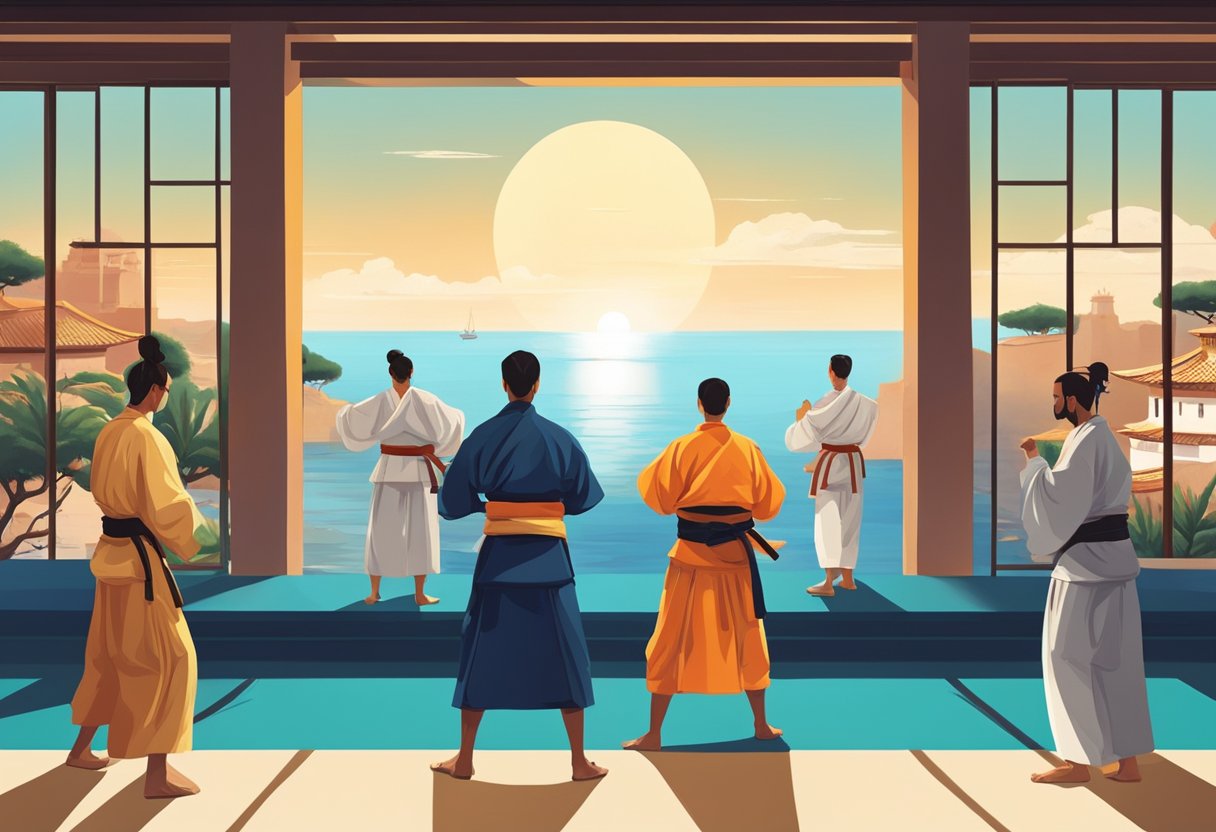
Martial arts in Mediterranean countries encompass a variety of fighting styles and training methods that have been influenced by the diverse civilizations that flourished in the region. From Greek Pankration to traditional Italian fencing, each form carries its own unique characteristics and philosophical underpinnings. Adopting a holistic approach, Mediterranean martial arts stress the importance of balance and harmony between mind and body, contributing to overall well-being.
Key Takeaways
- Martial arts in the Mediterranean combine cultural traditions with physical discipline.
- These arts reflect historical influences and contribute to mental and physical health.
- They offer diverse training techniques, adapted to contemporary fitness goals.
Table of Contents
Historical and Cultural Foundations
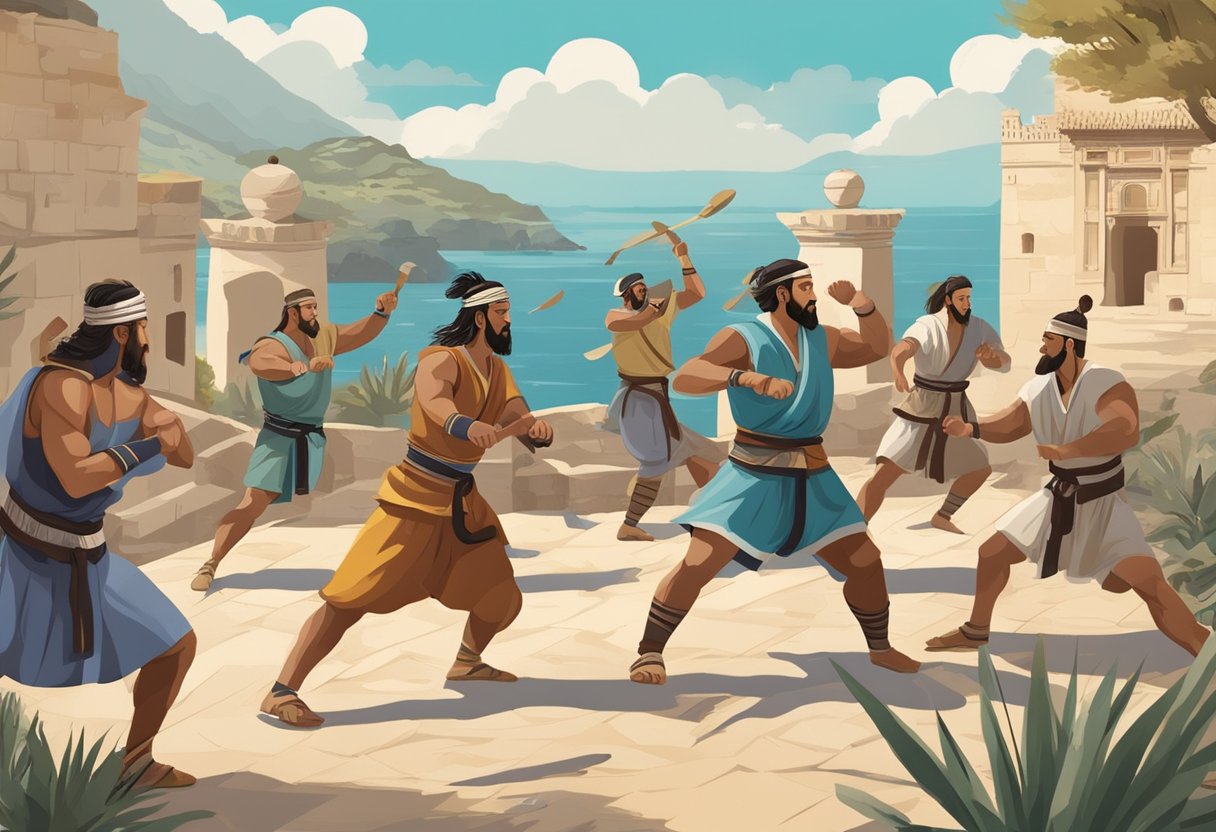
The Mediterranean region’s martial arts embody a deep-seated cultural heritage and have evolved notably alongside significant historical events. Their development is intrinsically linked to the collective identity and traditions of the Mediterranean peoples.
Cultural Heritage of Mediterranean Martial Arts
Mediterranean martial arts have been profoundly shaped by the region’s rich cultural tapestry. Aspects of these martial arts such as karate and judo, originally from Asia, have been adapted within Mediterranean societies, blending local customs with foreign influences. For instance, the principles of honor and respect found in traditional karate dojos echo the values held dearly in Mediterranean cultures.
Furthermore, styles like capoeira, which has African and Brazilian roots, represent the enduring impact of the African diaspora in southern European countries. Capoeira is known for its fluid movements and rhythmic components, aligning with the Mediterranean emphasis on music and dance as part of the region’s vibrant community life.
Evolution in Combat Sports
The evolution of combat sports in the Mediterranean region reflects both adaptation to modern practices and preservation of historical techniques. The introduction of sports such as taekwondo into the Mediterranean has spurred a fusion of local martial practices with global combat sports. This melding has given rise to competitions and training methodologies that respect historical methods while capitalizing on advances in fitness and nutrition.
Notably, the Mediterranean adherence to a gluten-free diet mirrors the discipline and dietary awareness common in martial arts like judo, where weight categories are crucial. Athletes often adopt specific dietary regimes to enhance performance, mirroring the broader Mediterranean population’s focus on healthful eating habits.
Physical and Psychological Aspects

Mediterranean martial arts encompass a unique combination of cultural depth and comprehensive benefits for practitioners, addressing key areas such as health, mental acuity, and overall physical fitness while also considering the implications of age on participation.
Health Benefits and Risks
Mediterranean martial arts offer a variety of health benefits, including improved cardiovascular health, weight management, and enhanced balance, which can reduce the risk of falls, particularly in the elderly. Practitioners often experience a boost in quality of life and well-being. However, there is a spectrum of risks associated with the physical activity involved; injuries can occur if proper techniques and precautions are not followed.
Mental Health and Cognitive Development
The disciplined practice of these martial arts has been linked to psychological well-being, including reductions in stress levels and improvements in mood. An extended program of martial arts training can be a potent intervention for at-risk youths, aiding in the improvement of cognitive functions and psychological functions.
Physical Fitness and Martial Arts
Martial arts training is a dynamic form of physical activity that can significantly contribute to an individual’s fitness. It involves various movements that challenge the body’s strength, endurance, and flexibility, thereby enhancing physical performance and contributing to the prevention of lifestyle-related diseases such as obesity and diabetes mellitus.
Age and Participation in Martial Arts
Mediterranean martial arts are accessible to a wide age range, from childhood to the elderly. Age-specific classes cater to the differing needs and capabilities of participants, ensuring that both young children and older adults can safely engage in martial arts practice to maintain physical activity and health throughout the lifespan.
Training Methods and Education
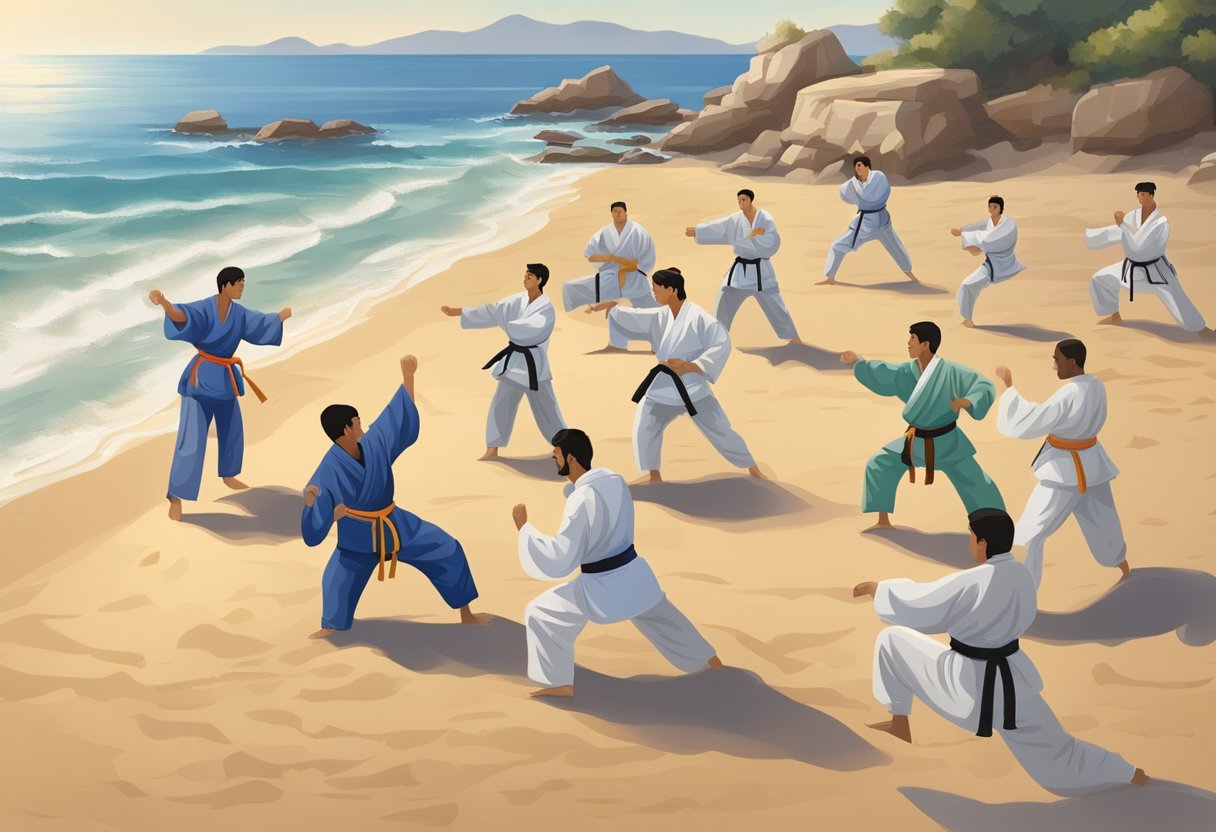
Mediterranean martial arts combine rigorous training with cultural traditions, offering participants a unique approach to physical and mental wellbeing.
Training Techniques and Performance Enhancement
Mediterranean martial arts are characterized by a diverse set of training techniques aimed at enhancing both physical and mental performance. Core to these practices is the development of skills essential for combat sports, most notably Mixed Martial Arts (MMA).
Physical Training: It typically includes aerobic and strength exercises, promoting endurance and powerful movements essential for self-defense and competitive fighting.
- Aerobic Endurance: Practitioners often engage in running and sparring sessions to increase stamina.
- Strength Training: Weightlifting and bodyweight exercises are incorporated to build the muscle mass necessary for power.
-
Skill Development: Fighters focus on perfecting techniques such as strikes, grapples, and takedowns, important for MMA performance. Drills and sparring aid in this skill refinement process.
-
Relaxation and Recovery: Yoga and mindfulness exercises are integrated into training regimens to help with relaxation and concentration. This aids in better recovery post intense physical workouts and supports weight loss strategies by reducing stress-related overeating.
Martial Arts Schools and Their Influence
Martial arts schools in the Mediterranean region significantly impact the propagation of martial arts as a form of cultural exercise and education.
Curriculum: Schools provide structured curricula that emphasize the importance of martial arts participation not only as sport but also as an avenue for learning self-discipline and community values.
- Programs for All Ages: These schools offer programs suitable for different age groups and skill levels, encouraging lifelong participation.
-
Community and Culture: They serve as hubs for cultural exchange where tradition and modern techniques of Mixed Martial Arts coalesce, enriching the training experience.
-
Health and Fitness: A key component of the martial arts education in schools is the promotion of health through exercise. Mediterranean martial arts schools often include nutrition advice tailored to the needs of athletes, advocating for balanced diets conducive to training needs and recovery.
By maintaining these training and educational standards, Mediterranean martial arts schools help instill a culture of physical fitness, self-defense prowess, and cognitive skills, ensuring that participants receive a well-rounded experience.
Martial Arts in Modern Society

While the Mediterranean lifestyle is renowned for its connection to healthy living through diet and exercise, martial arts have emerged as a notable contributor to the blend of culture and physical fitness in modern society.
Popularity and Media Influence
Martial arts have surged in visibility due in part to their captivating presence in media. From high-octane action films to competitive sports broadcasting, these disciplines capture audiences worldwide, cementing their status in popular culture. The influence of media has seen a proliferation of training centers and dojos, as exposure to cinematic depictions of martial artists sparks interest among the youth and adults alike. This has elevated martial arts from traditional combat practices to mainstream fitness trends, embraced by various professional groups for their blend of physical and strategic prowess.
Martial Arts, Sports, and Health Policies
Turning to the health aspects, martial arts are increasingly incorporated into health policies and wellness programs, recognized for their potential in disease prevention and maintenance of health status. Governed sports bodies are also recognizing martial arts as official sports, giving a platform for athletes to compete at regional, national, and international levels. This formal recognition contributes to the normalization of martial arts as viable sports, paralleling traditional Mediterranean practices that emphasize physical fitness for overall well-being. They have become integrated into the community fabric, with local sports clubs often offering classes that combine the promotion of physical fitness with social interaction.
Spiritual and Philosophical Dimensions

Mediterranean martial arts extend beyond physical prowess, deeply intertwining with spiritual growth and life enhancement, where practices like Zen and Taijiquan contribute to both spiritual and personal development.
Spirituality and Self-improvement
Mediterranean martial arts often incorporate elements of Zen and yoga, promoting a holistic approach to self-improvement. Practitioners are not just engaged in physical activity but also spiritual cultivation. Taijiquan, for example, is not merely a form of self-defense but a pathway to achieve greater spiritual development. It demands an integration of movement with breath control, fostering a meditative state that enhances self-awareness and inner peace. Through regular practice, individuals can experience a transformation that transcends the physical, leading to improved motivation and well-being.
Martial Arts and Quality of Life
The impact on quality of life through the practice of Mediterranean martial arts is significant. The disciplines offer more than just a means to fitness; they represent a lifestyle that values balance, harmony, and the connection between body and mind. Regular practice can bring about a range of benefits, including stress reduction, heightened focus, and a sense of tranquility that permeates daily life. The philosophical teachings of martial arts, akin to the principles found in yoga, promote virtues such as patience, discipline, and respect that resonate beyond the training space, potentially transforming how one interacts with themselves and the world.
Safety and Preventive Measures
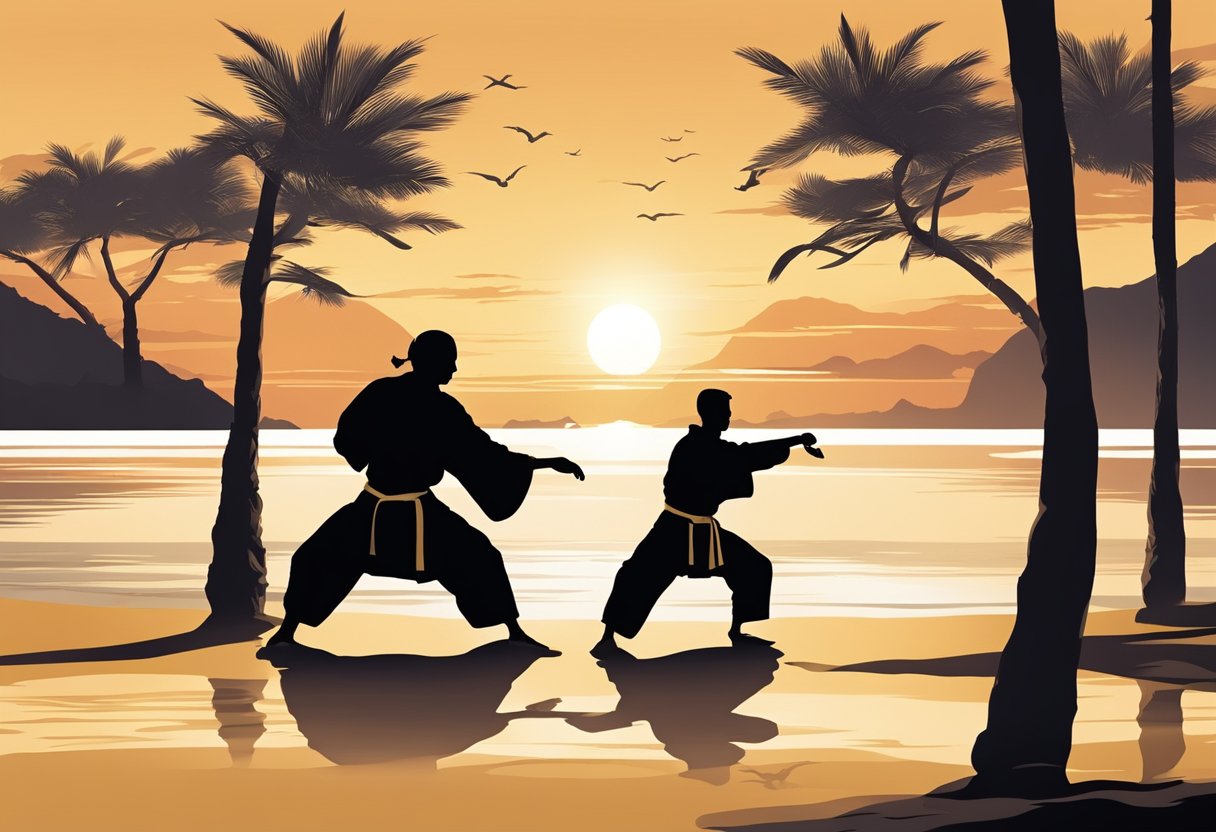
In the realm of Mediterranean Martial Arts, safety takes precedence to ensure that participants enjoy the benefits of physical fitness without undue risk to their health. Attention to safe practices significantly reduces the likelihood of injuries and related complications.
Martial Arts for Special Populations
Mediterranean Martial Arts offer inclusive training frameworks that cater to special populations, including individuals with intellectual disabilities and mental health concerns. These programs are designed to provide the therapeutic benefits of martial arts – such as improved coordination, fitness, and self-defense skills – while minimizing any potential for harm. Structured classes for these groups employ tailored exercises and adaptive teaching methods to ensure safe participation and positive outcomes.
Prevention of Injuries and Safe Practices
The effective prevention of injuries in martial arts centers around a blend of education, training modifications, and protective measures. Practitioners are instructed in proper techniques to avoid common mishaps such as sprains and fractures. Regular exercises that strengthen the muscles and enhance flexibility contribute immensely to safety and may reduce overall morbidity. Moreover, the adoption of appropriate protective gear – in both training and sparring sessions – is critical in reducing the probability of significant injury. The assurance of proper supervision and a safe training environment is paramount, as is the provision of immediate attention to any injuries sustained to prevent complications and promote quick recovery.
Sociocultural Impact and Global Reach
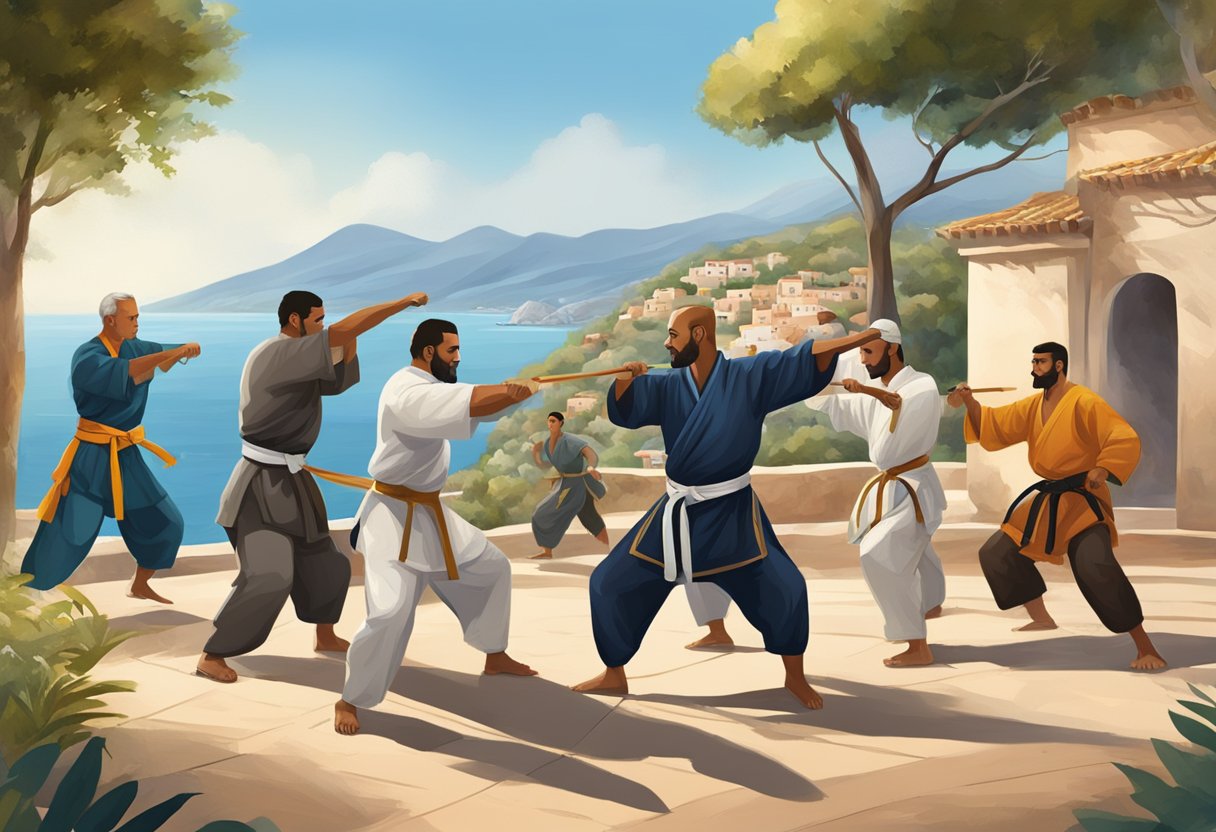
Mediterranean martial arts encapsulate a rich tapestry of cultural heritage embedded in physical discipline, interlinking societal values and international outreach.
Influence of Martial Arts on Social Dynamics
Mediterranean martial arts serve as a medium for both communication and assertion, which often lead to shifts in social dynamics. In countries like Croatia and Poland, training in these disciplines emphasizes directiveness and honesty, resonating with the sociodemographic norms of straightforward interaction.
Cultural Heritage:
- Poland and Croatia: Centralized instruction in hard martial arts reflects the steadfast nature and cultural assertiveness of these nations.
- Communication: Training in martial arts enhances clear and effective interpersonal communication, particularly through the non-verbal cues inherent in martial art traditions.
Global Proliferation of Mediterranean Martial Arts
The international spread of Mediterranean martial arts has been marked by a profound cultural exchange, introducing these hard martial arts beyond their native borders to a global audience.
Cultural Exchange:
- International Reach: The teachings of Mediterranean martial arts have transcended their regional confines, propelled by adherence to their core values.
- Aggression and Perception: While these martial arts often involve controlled aggression, globally they are viewed as a gateway to understanding the assertiveness within Mediterranean cultures, rather than promoting outright aggression.
Frequently Asked Questions
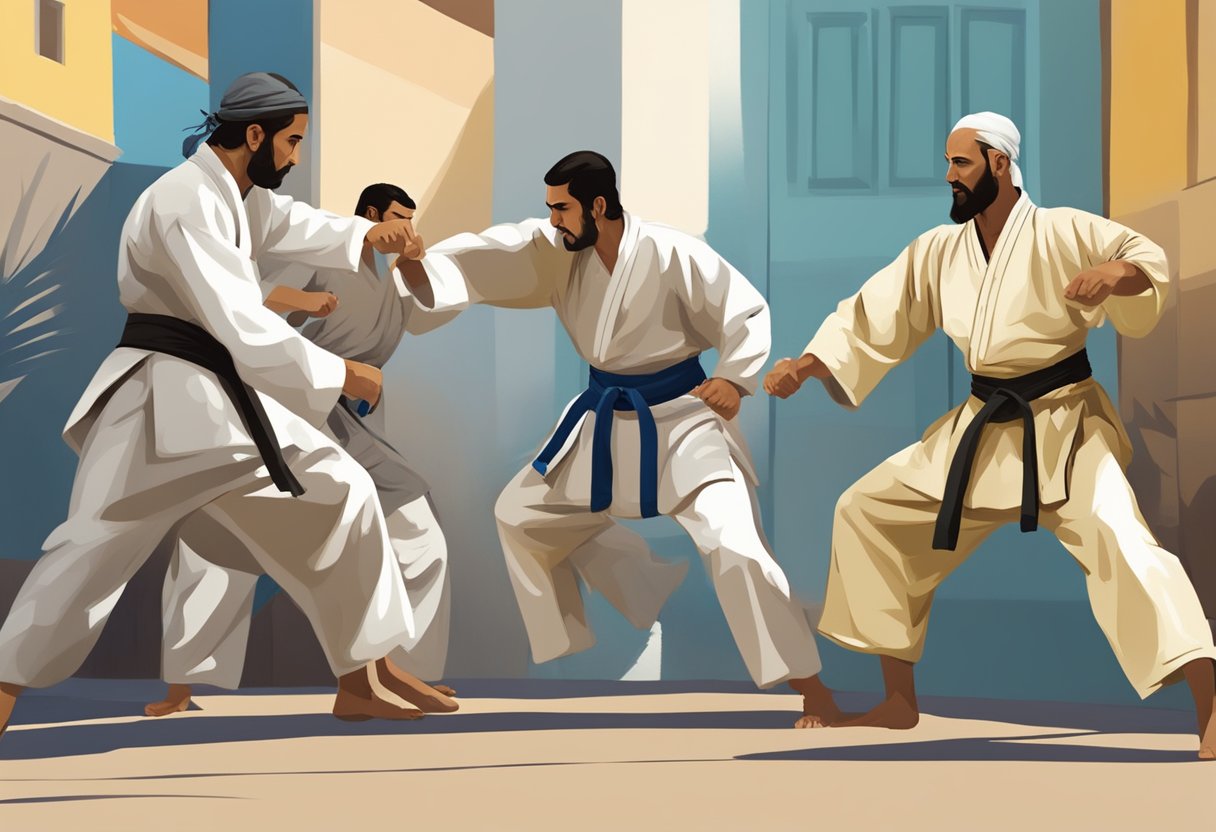
Exploring the rich tapestry of Mediterranean martial arts, many questions arise regarding their history, practice, and cultural significance. This section provides insights into some of the most commonly asked questions.
Which Ancient Indian martial art is believed to have similarities with Arnis?
Kalaripayattu, an ancient Indian martial art, is believed to share similarities with Arnis, specifically in its emphasis on intricate hand movements and weaponry.
Why was Capoeira historically prohibited?
Capoeira was historically prohibited because it was associated with African slaves in Brazil who practiced the art as a form of resistance and self-defense. Its deceptive dance-like appearance allowed it to be disguised as a dance while serving as a martial art.
What specific aspect of Arnis focuses on the use of weapons?
Eskrima, also known as Kali or Arnis, specifically focuses on the use of weapons, including sticks, knives, and other bladed instruments, as part of its core training methods.
What is the standard measurement for the sticks used in Arnis training?
The standard measurement for sticks used in Arnis training, known as “baston” or “yantok,” is typically about 28 to 32 inches in length and is used to simulate swords and other weapons.
What term is commonly used to refer to a practitioner of Capoeira?
A practitioner of Capoeira is commonly referred to as a “capoeirista,” a term indicative of the individual’s expertise in the art form.
What distinguishes traditional martial arts from sports-oriented varieties?
Traditional martial arts are often characterized by their focus on philosophical and cultural elements, while sports-oriented varieties prioritize the competitive aspect, emphasizing physical prowess and points-based victories.


